Watering tomato plants the right way is the key to successful crops
Get healthy and delicious crops by watering tomato plants in the best way possible
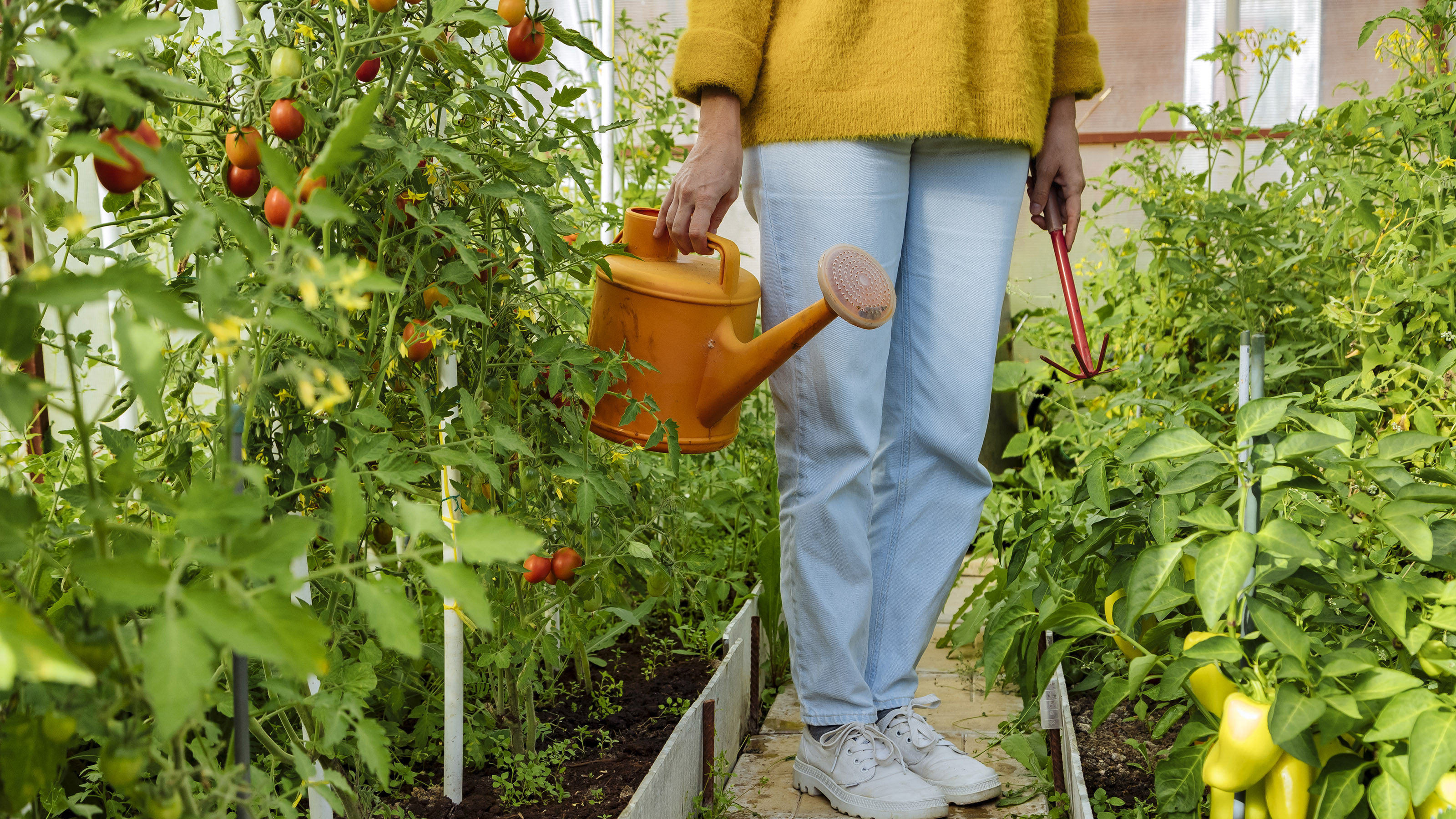

Tomatoes are the divas of the vegetable patch. Watering tomato plants correctly is a major key to their happiness. They’re most definitely not plants which thrive on neglect. As well as being super sensitive to light and temperature fluctuations, they need consistent watering and feeding to produce the best crops.
But don’t let their finicky demands put you off growing them – the taste of sun-warmed tomatoes fresh off the vine is unbeatable. The deal is tomatoes prefer to be in soil that’s evenly moist all of the time.
So, soil that’s not overly wet and soggy, nor soil that’s too dry. Too dry and they will wilt, too wet they risk drowning. Damp compost also helps them take up all the nutrients they need to grow as strong plants with lots of fruits.
While hot and dry conditions help to keep blight at bay, consistent feeding and watering plants remains essential for getting the best crops.
6 essential tips for watering tomato plants
Ruth Hayes, gardening editor of Amateur Gardening says, 'I think the key to success with growing tomatoes, of whatever variety, is to keep their compost at the right level of dampness.'
Position them where they’ll get 6-8 hours of full sun a day and follow our best practice techniques for watering tomato plants below, and you’ll be in with a good chance of producing the tastiest tomatoes along with implementing some garden water saving tips.
1. Use the right potting mix for drainage
If you’re growing tomatoes in containers it pays to use a good potting mix that will allow water to drain but remain moist (not soggy). It’s often cheaper to make your own mix than buy a commercial one.
UK gardening expert Monty Don recommends three parts coco coir (adds bulk, soak it first), one part sieved garden soil (for water retention and nutrients), one part sieved garden compost (for plant health), and one part perlite (for drainage).
If you don’t have a garden compost heap nor very good garden soil, use a quality potting mix like John Innes No3 instead. This way, whether you're using the best garden hose or you use a rain barrel, a good soil mix will help keep your tomatoes at the right moisture.
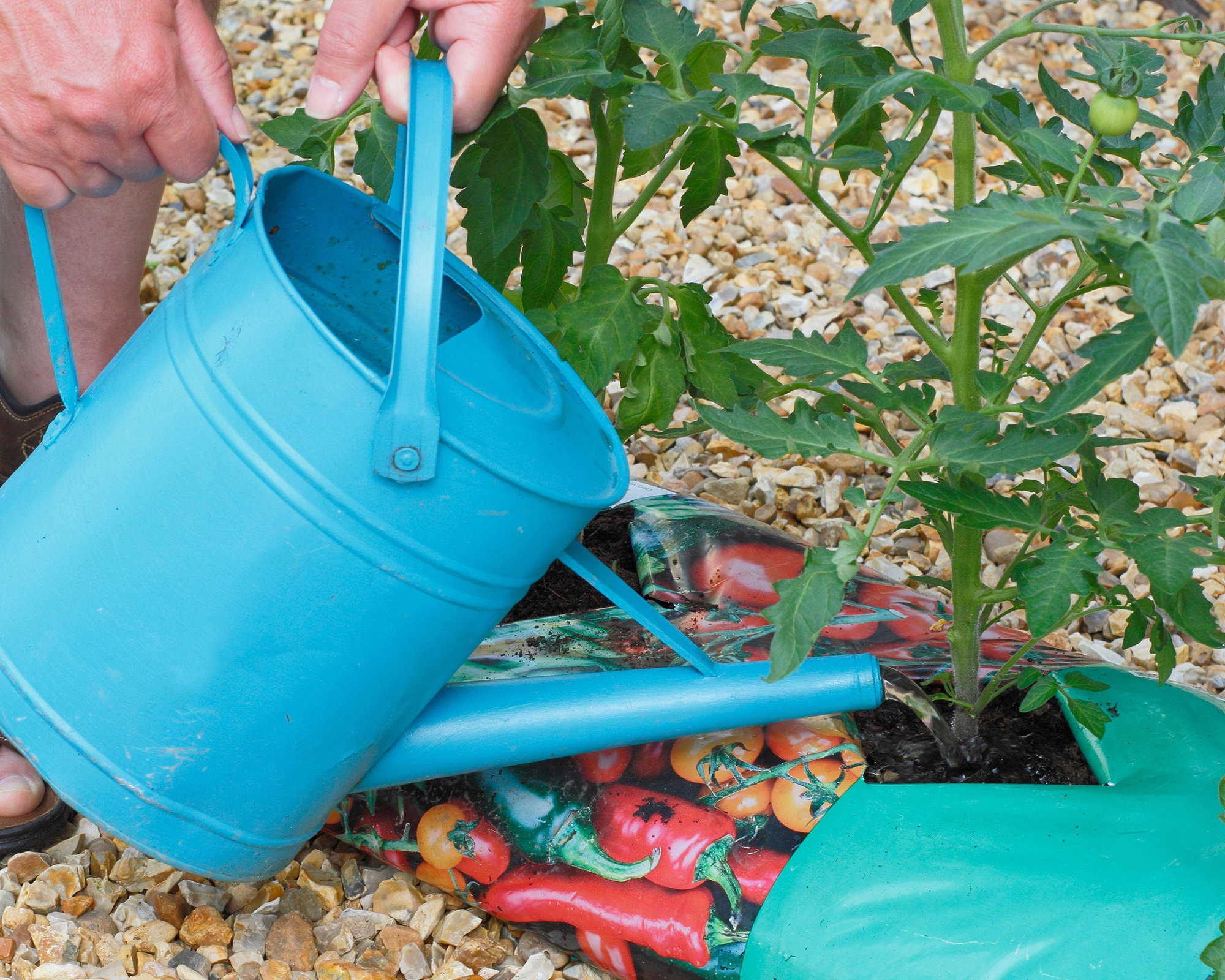
You can buy grow bags of compost which are specially formulated for growing tomatoes
2. Plant tomatoes in big containers to retain water
When all threat of spring frost has passed in your region, it’s time to pot young plants into their final containers. The bigger the pot, the less frequently you’ll be watering tomato plants in warm weather, and the more room roots have to run.
Try to find a pot that’s at least 16in (40cm) deep and wide and ensure it has drainage holes so that the soil drains well. A half whiskey or wine barrel is a great option. You could even set up a DIY drip irrigation system in your pots as a way of watering tomato plants.
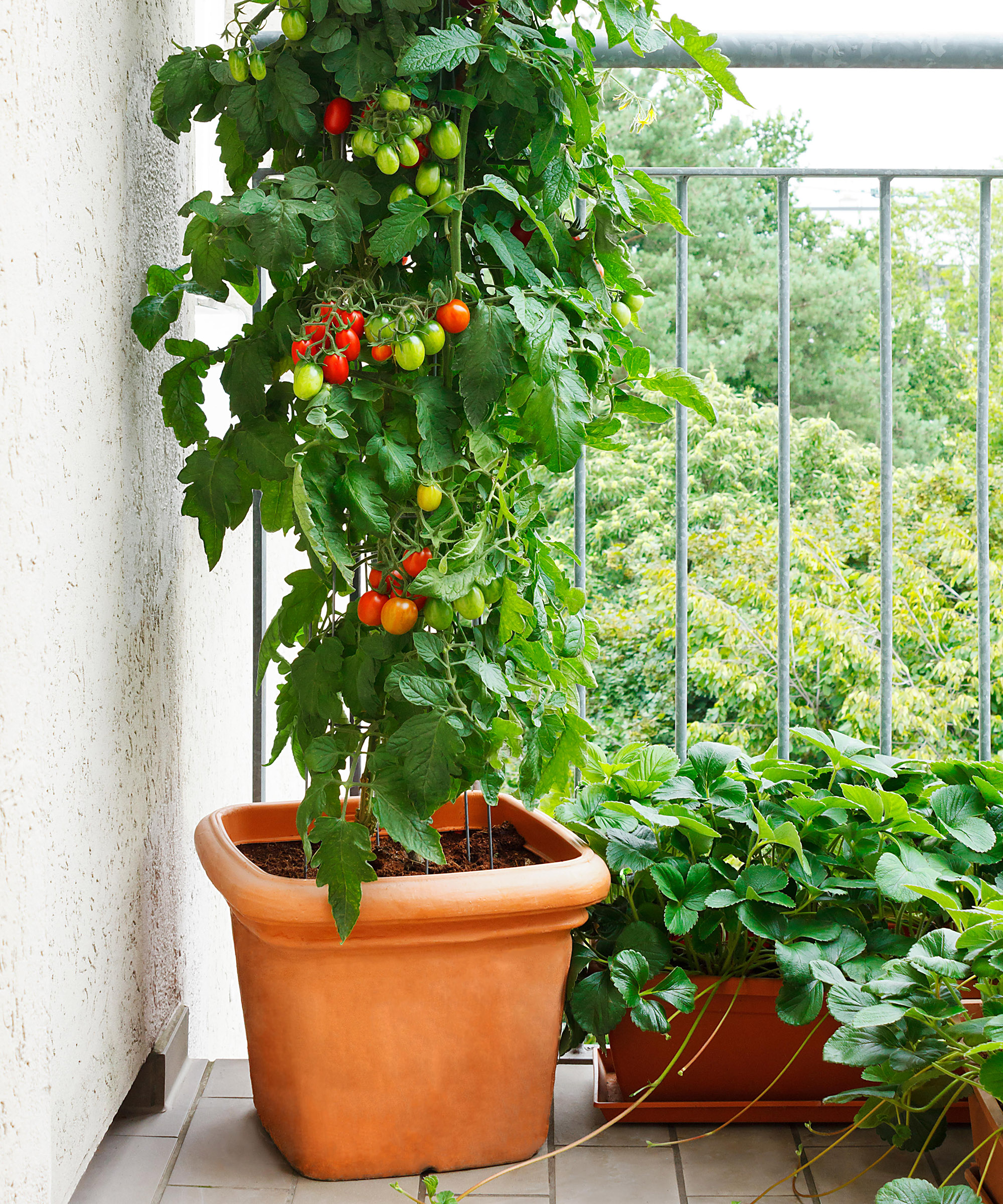
Larger pots will hold onto moisture longer
3. Add a mulch to lock water in
About 3-5 weeks after you’ve planted your tomatoes in the ground, and when the soil is being nicely warmed by the early summer sun, add a mulch of straw or composted bark.
This will serve to regulate the soil temperature and lock moisture in. Don’t apply organic mulches too close to the stems as this could cause them to rot off. Wood chippings make a good mulch for tomato plants in containers.
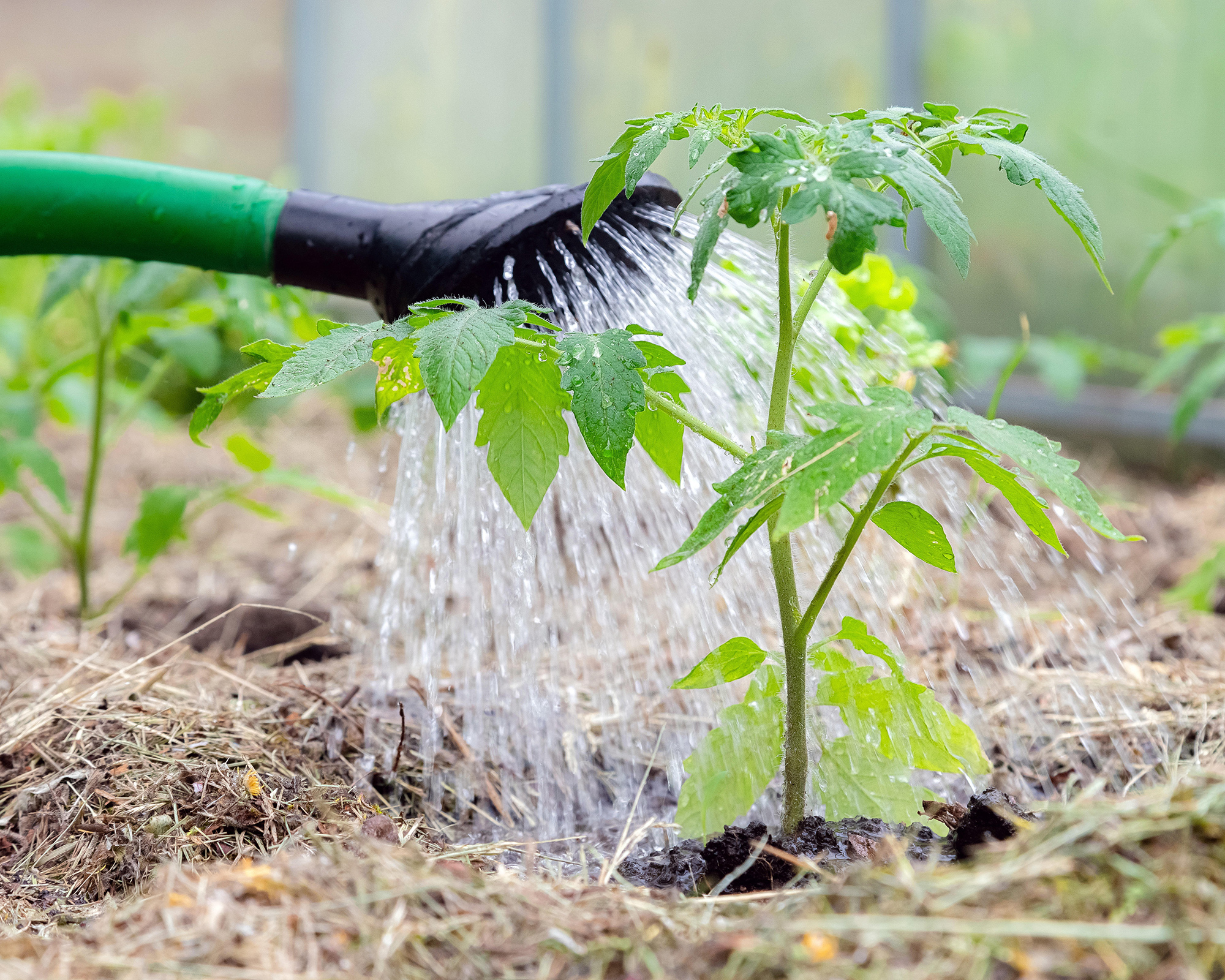
A mulch of straw will help regulate moisture in the surrounding soil
4. Water tomato plants deeply
Whether your plants are in the ground or in containers, it’s always best practice to ensure you're watering tomato plants deeply, so that the whole rootball gets a soaking.
The best time to water plants is first thing in the morning. Let plants dry out a bit between waterings – stick your finger in the compost to feel how dry/wet it is.
Bone dry soil is less absorbent than slightly damp soil so will take more watering to get it moist again. 'After you irrigate try lifting up one edge of the pot to make sure water is being absorbed and the pot is heavy', says Scott Daigre, founder of Tomatomania.
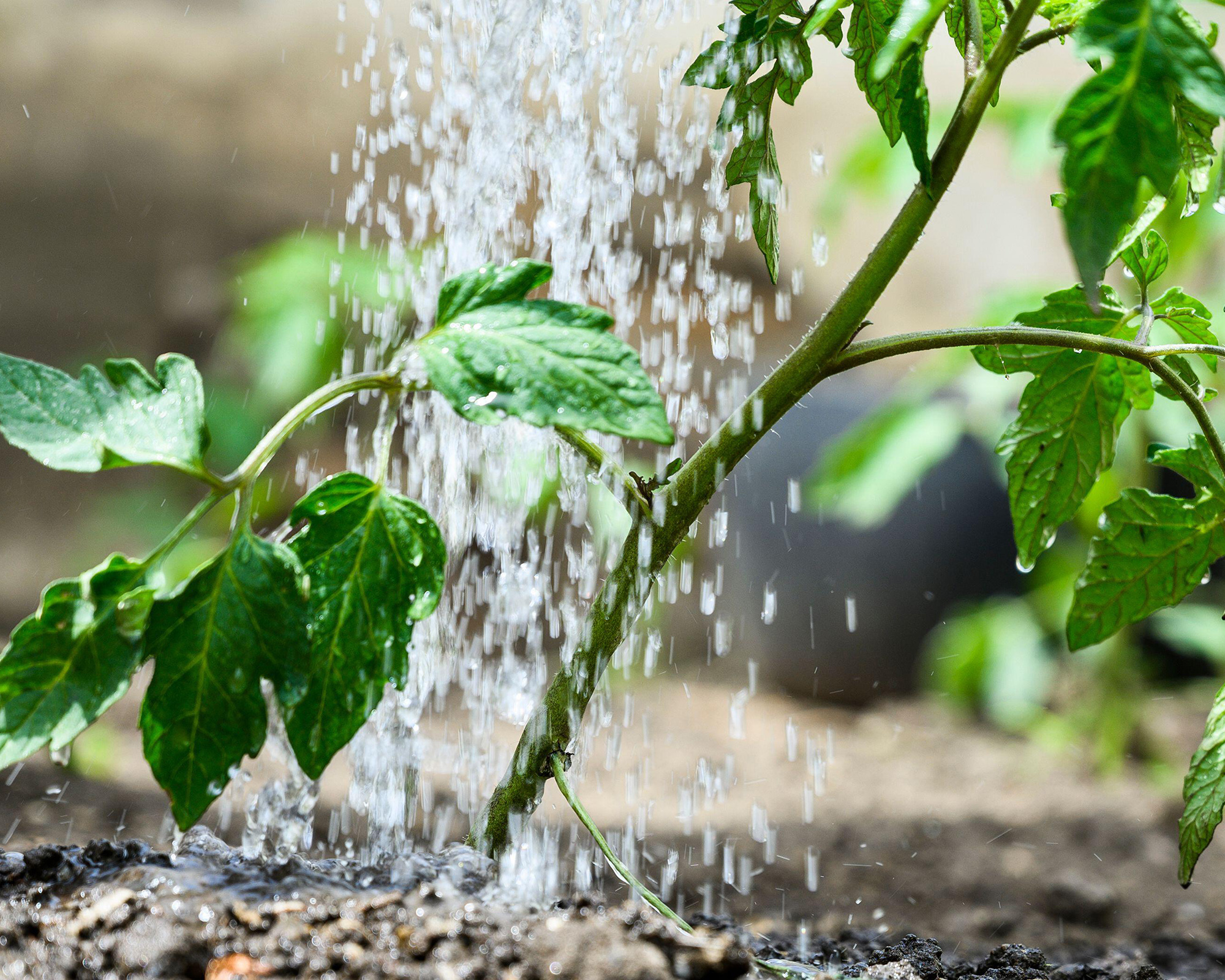
Avoid letting your soil get bone-dry between waterings
5. Use the bottle trick to water the roots
If growing plants in the ground, dig a hole next to the plant and insert an upside down bottle that’s had the base cut off. Use it like a funnel to direct the water straight to the roots rather than sitting on the surface of the soil or splashing the leaves (which can encourage fungal disease).
Top this bottle up before you go on a short vacation as a way of watering plants while away.
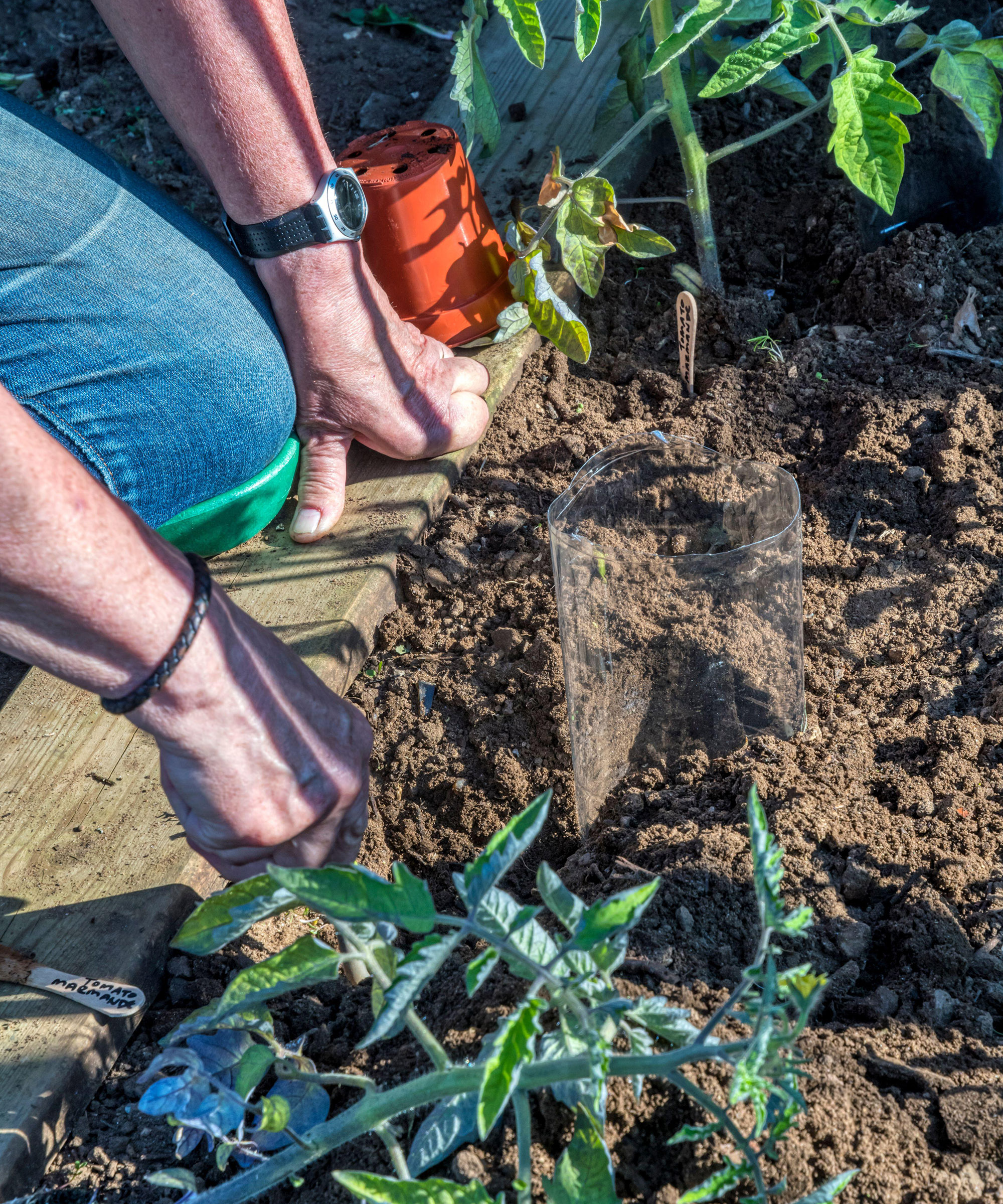
An upside down bottle in the soil will allow you to water straight to the roots of your tomato plants
6. De-leaf the lower branches to conserve water
Removing the lower branches when growing tomatoes has several benefits. It reduces the amount you need to be watering tomato plants, and improves air circulation. It also directs the flow of nutrients and water further up the plant and to the fruit.
Set young plants deep, burying the leafless part, and they will soon start to sprout additional roots along the buried stems.
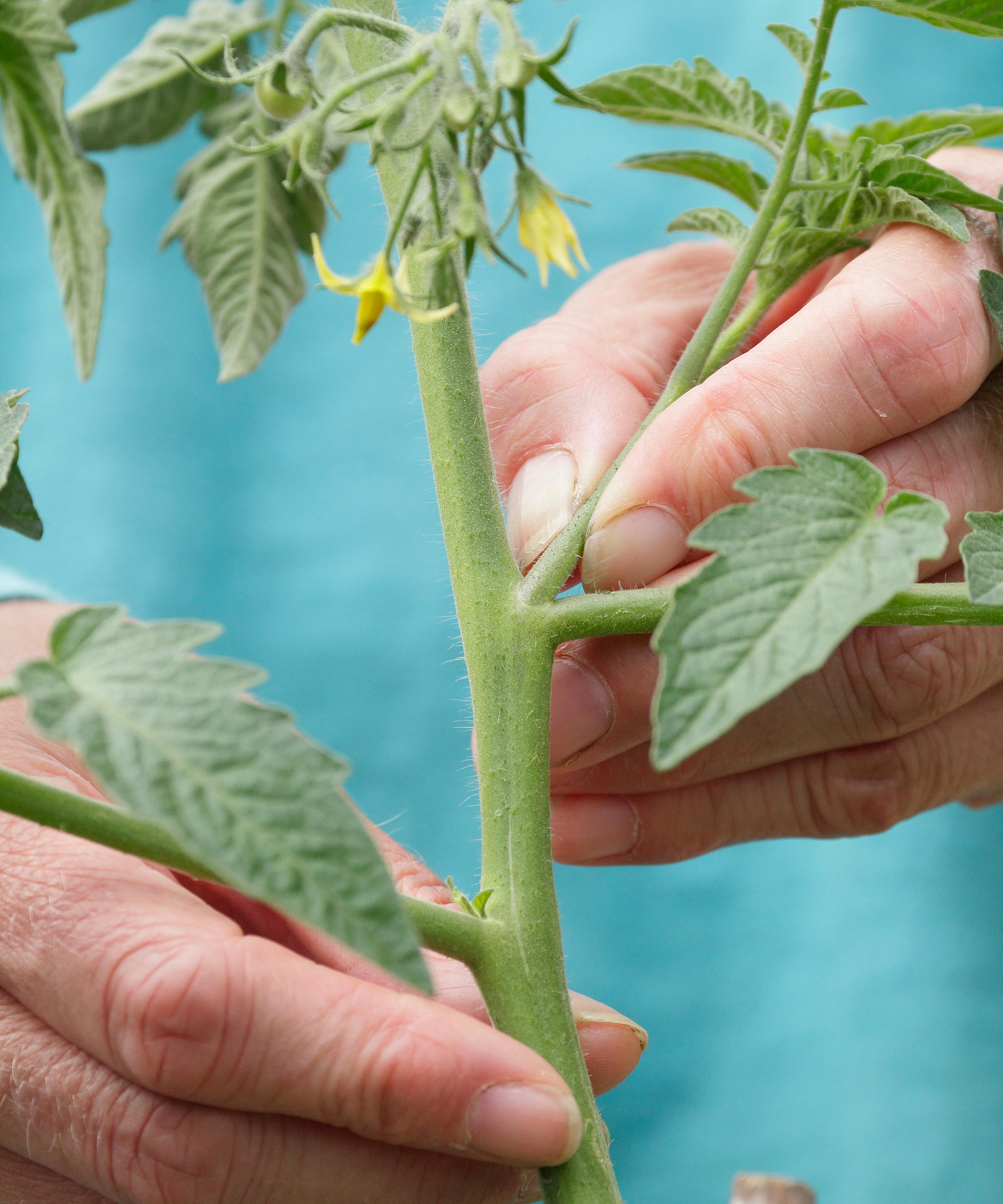
Removing the lower branches of tomato plants means less water is needed
Should tomato plants be watered every day?
Not necessarily. It depends on the weather, the growth stage of the plant (young plants need less watering), the growing conditions, and the soil. You may need to water tomatoes in pots twice a day, and those in the ground once a week.
The key is to observe. If the soil looks and feels dry, water. Cut back on watering in late summer so that the fruits develop a good flavor. Also remember there are self-watering systems you can try.
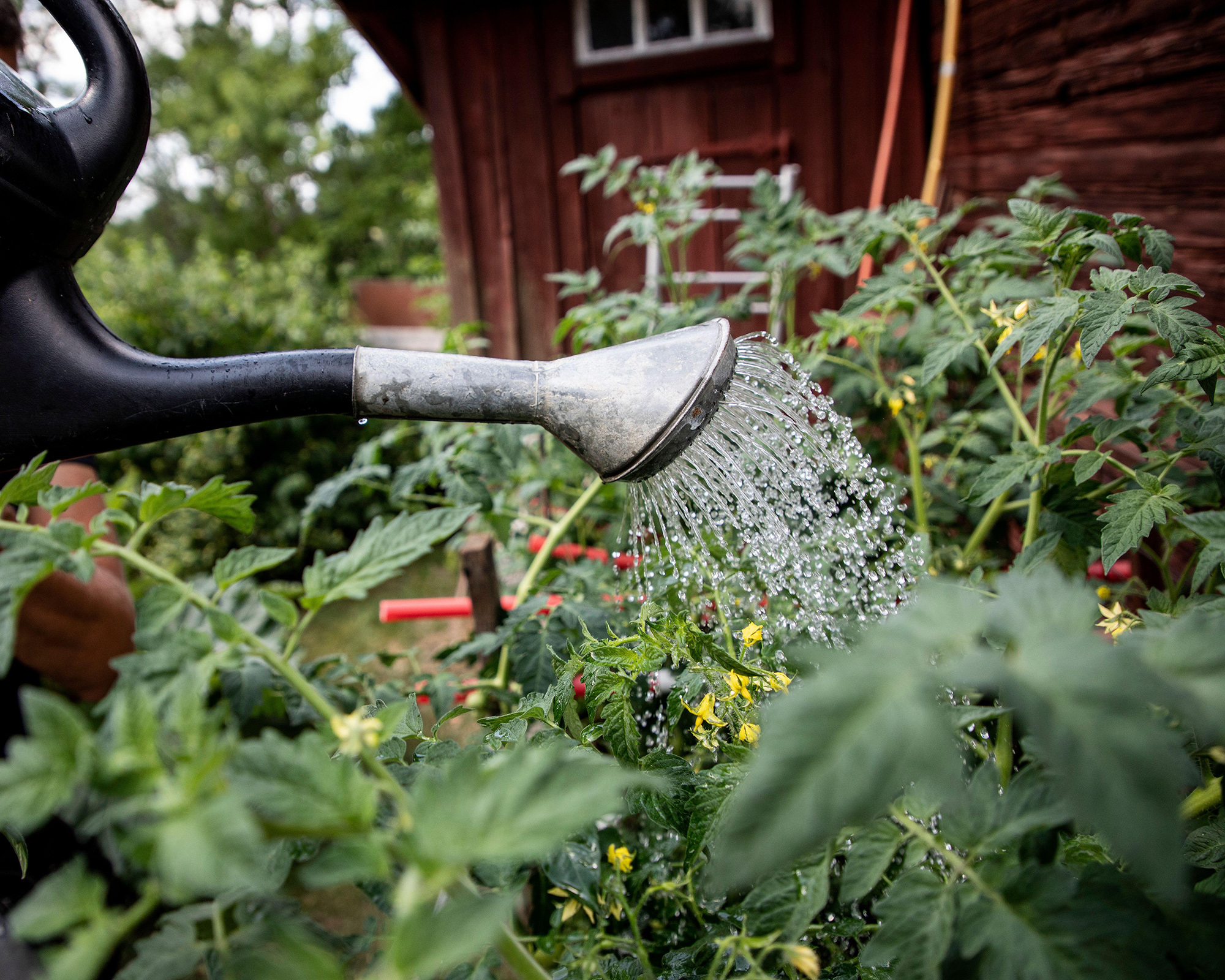
Water tomato plants in the evening out of the midday sun
What is the best way to water tomatoes?
Always water the soil, not the foliage or the stems. Not only is this method water wise (not wasting any water), but it also helps to prevent pests and diseases, like tomato blight. Never let pots stand in water – allow the water to drain out through drainage holes.
What are the signs of overwatering tomato plants?
- Yellowing wilted leaves.
- Little or no fruit set and/or watery tasteless fruit.
- Upper leaves curling.
- Cracked fruit.
- Soft crowns and brown rotting roots.
- Soil that doesn’t ever dry out, and smells sulfurous.
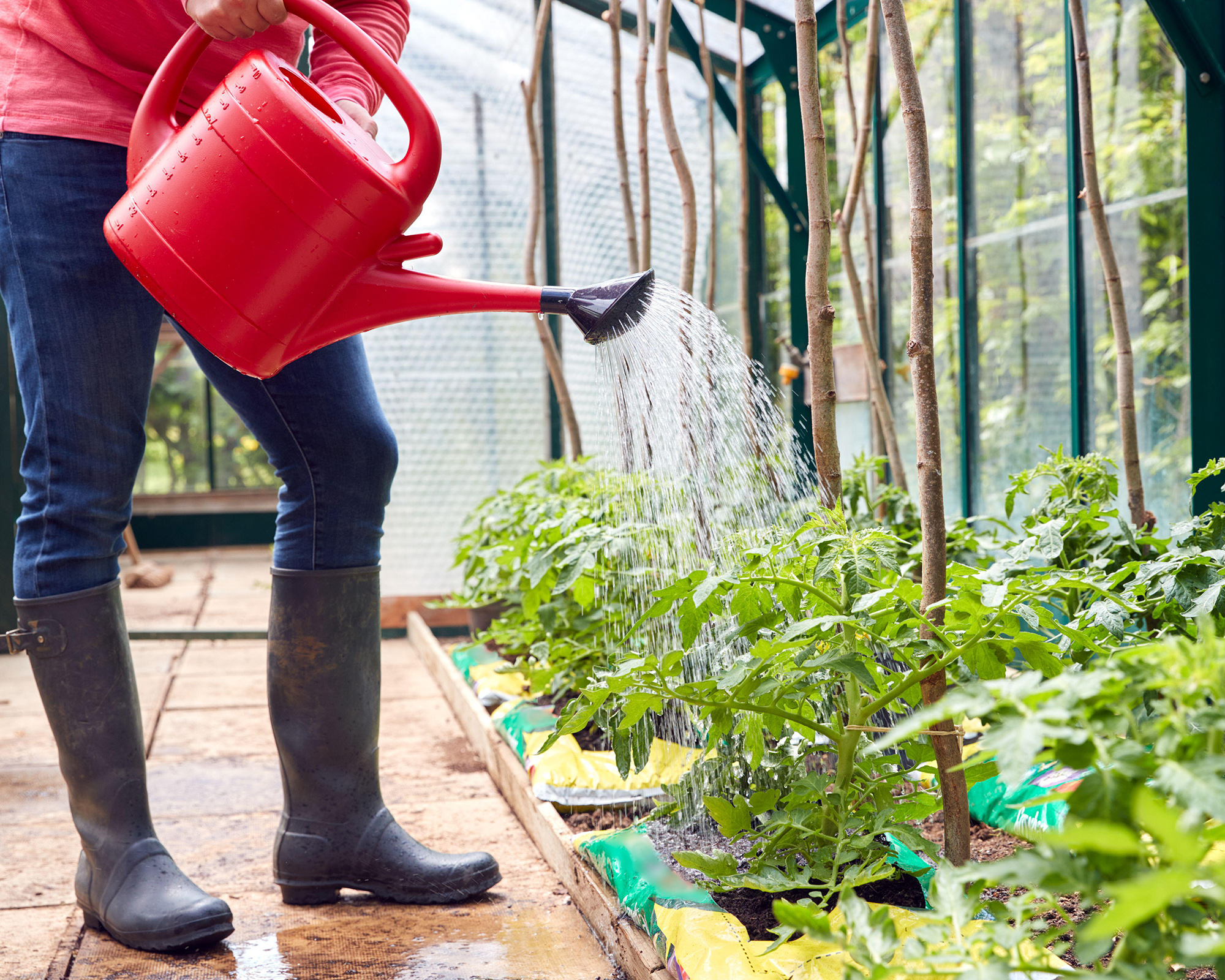
Overwatering tomatoes can cause tasteless fruit
Can overwatered tomato plants be corrected?
Once you’ve figured out if indeed you’ve been watering tomato plants too much, reduce watering and let the plant recover. If you’re able to carefully remove plants from their pots, use newspaper to soak up the excess water from the rootball and return the plant to its pot.
Tipping pots on their side is another way to allow the excess water to drain out. Watch for overwatering in cooler, coastal areas, where the compost won’t be drying out as quickly.

Working at a garden center when she was 23, Sally realised straight away the therapeutic power of being around greenery and nurturing plants. She's horticulturally trained to degree level and has worked on gardening magazines for over a decade. Sally now gardens in Bournemouth, UK, zone 8a (H5).
